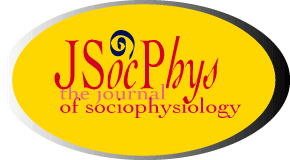
00108 : August 1992 : The Solvay Solution : OFF
An organ of ISOCPHYS.
Founded in 1992 by a “sestina of polylexical exiles.”
Institute of Sociophysiology (ISOCPHYS)
Château Methuen
Owlstain, FZ 23632
Communicated by Ms. Strickland, July 17, 1992
devi: “Par cela même qu’elle est une science biologique,” wrote Waxweiler (2), “la sociologie impose à celui qui s’y consacre, au sociologiste —”
turbo: And should we hasten to add that sociophysiology imposes on whomever would consecrate herself to it, c’est-à-dire, on the sociophysiologist? —
vighdan: By all means. Continue, Kiko.
devi: “ — le souci constant du point de vue, des méthodes et des procédés de travail de la biologie.”
vighdan: “Chaque groupe humain particulier,” suggested Solvay (1), “l’espèce humaine toute entière, doivent être considérés comme une réaction chimique organisée qui se continue et tend à se développer sans cesse — “
flamingo: Didn’t Nietzsche say something like that? Something about a chemical historical philosophy of life?
hamiltonian: Exactly. And the organized chemical reaction, of course, doesn’t limit itself to any particular human group, or only to the human species toute entière, but constitutes all of life, all organisms, from the virus on “up”. Nietzsche was a crypto-sociophysiologist.
de queiros: Could he have been aposematic as well?